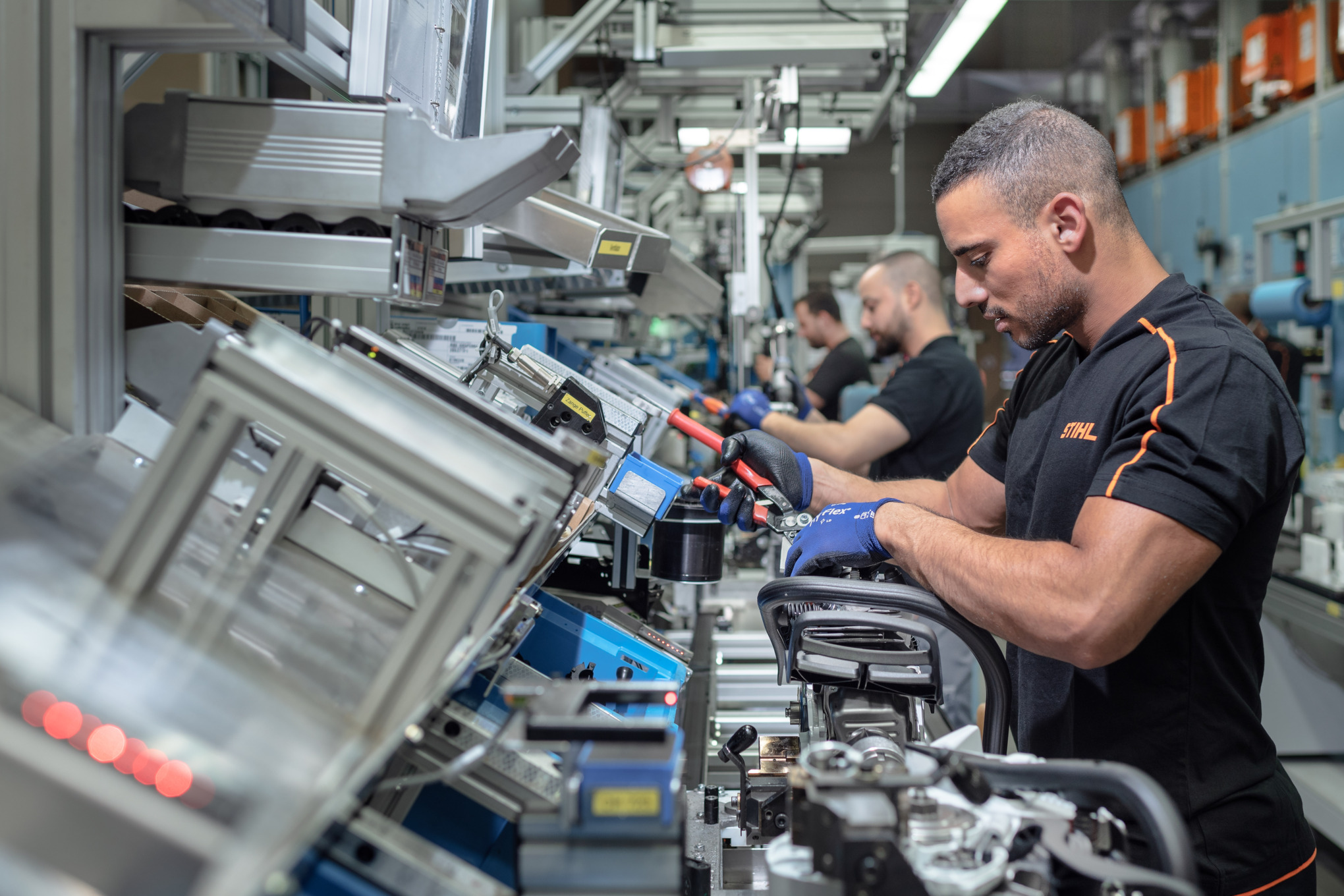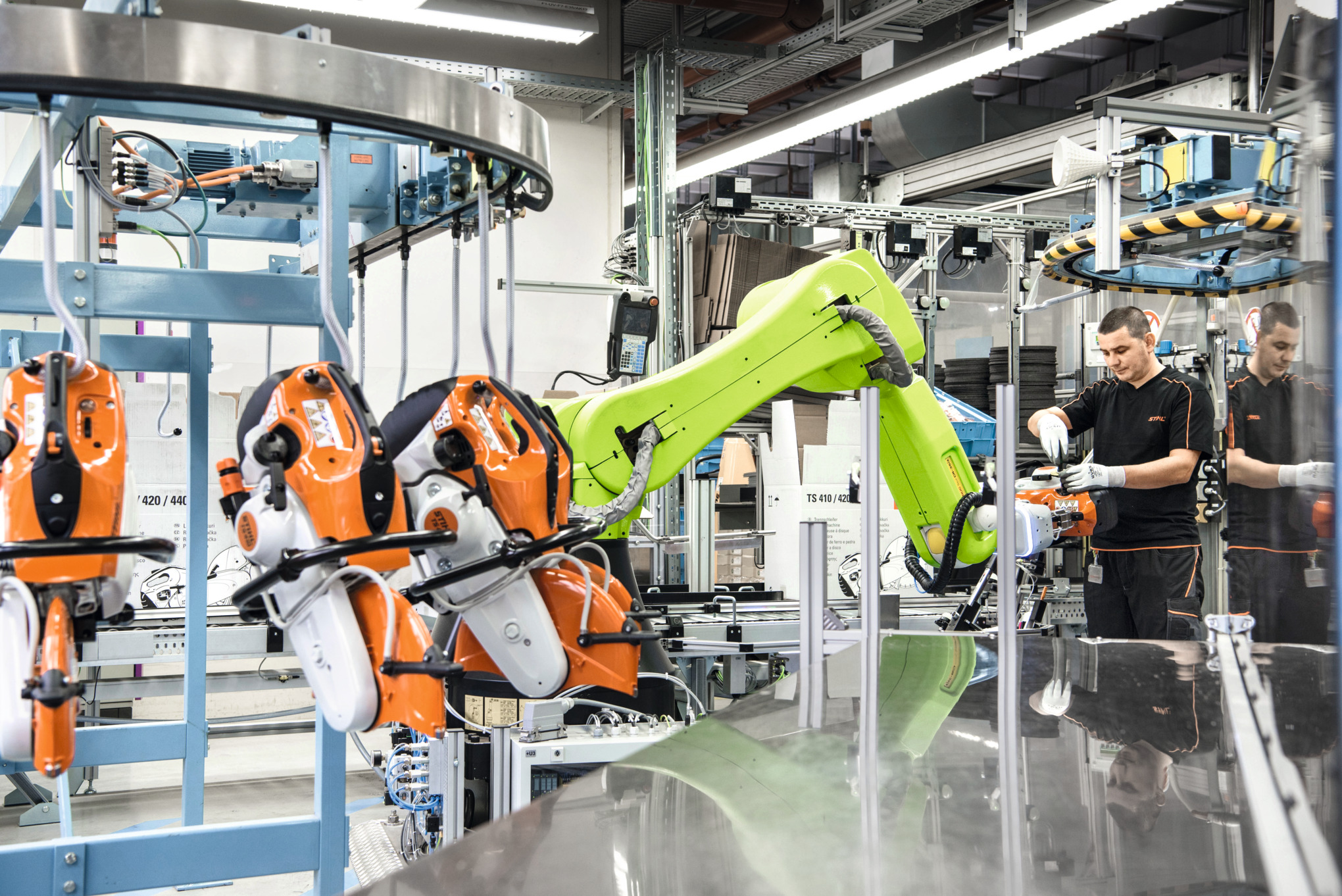STIHL quality means quality down to the smallest detail and optimal coordination of all parts and components. STIHL has been convinced for many years that a high level of vertical integration is the only way to ensure that we achieve this goal and thereby generate the greatest benefit for our customers. Using the MS 362 C as an example, we look at: What’s inside and where does it come from?
STIHL products are known for innovative top quality, paired with the latest technologies. The focus is always on customer benefits: The entire portfolio includes well over 1,000 different product types. From carburetor or handle heating for use in extremely cold regions to products such as emergency services saws and concrete cutters for special applications. To meet our own high standards and those of our customers, STIHL relies on a very special combination of three elements: In-house development, production and sales. While the Germany headquarters continues to be the incubator for the development of new products, the distribution network and the international production network have been continuously expanded.
Today STIHL manufactures in a total of seven countries worldwide. At up to 50 percent in some cases, vertical integration is significantly higher than in other industries. This is built on a conviction that only the optimal interaction of all components can really deliver the best result. That’s why so many things are made in-house at STIHL – whether it’s the cutting attachment, aluminum or magnesium parts, pistons, crankshafts, engine housings, carburetors, cylinders and cut and formed parts.
The example of the STIHL MS 362 C-M professional gasoline-driven chainsaw shows how decentralized production perfectly comes together in the end, in the form of a product.


SÃO LEOPOLDO (Brazil)
Cylinder
Cylinders guide the pistons in their up-and-down movement and also dissipate the heat generated during the combustion process via cooling fins or cylinder fins. Within the cylinder an explosion takes place, triggered by the combination of the fuel-oil mixture with air and the ignition spark generated by the spark plug. The pressure generated by the explosion is transferred to the piston, which then moves downwards to drive the crankshaft. The crankshaft transfers the movement to the chain via the clutch and the chain sprocket.

WAIBLINGEN (Germany)
Bar
The guide bar is responsible for precise guidance of the saw chain with minimal friction loss, and must withstand the toughest applications; it is the connection point which, via the saw chain, transfers the power of the engine into the wood. STIHL supplies the right guide bar for every application type from its own in-house development and production. Decades of research, high-quality materials, innovative production processes and state-of-the-art production facilities, as well as electronic production controls and final quality control ensure proven STIHL quality in every guide bar.

WIL (Switzerland)
Saw chain
STIHL saw chains are Swiss precision work: They have been produced for decades at the STIHL plant in Wil using special in-house-developed machinery. This focus on the product makes all the difference: Today STIHL offers saw chains for every application, every performance class and every STIHL chainsaw. When these are teamed with our in-house guide bars and engine units, optimal cutting behavior is assured. Another impressive feature of our innovative saw chains: They offer up to 20% more cutting performance and up to 20% less vibration.

QINGDAO (China)
Oil pump
Appropriate use of chain oil is crucial for the proper operation of a chainsaw. It helps to minimize wear and prevents overheating of the cutting tool arising from friction between the saw chain and guide bar. This lubrication oil is supplied from a separate tank to the chainsaw by a special oil pump, which works in connection with the motor speed and only runs when the chain is rotating. The oil pump on the STIHL MS 362 C-M also features precise, demand-driven oil delivery, which facilitates reduced consumption of chain oil by up to 50%.

WEINSHEIM (Germany)
Crankcase
As the component which contains the crankshaft, the crankcase is an important part of any combustion engine, including in STIHL petrol chainsaws. The crankcase of the STIHL MS 362 C-M consists of two magnesium halves which are manufactured using a die-casting process, at our magnesium die-casting plant in Eifel. The STIHL MS 500i, the first chainsaw with electronic fuel injection, also has various sensors installed in the crankcase of the motor unit. Specifically it contains a sensor for the external temperature, one for the internal temperature, and a pressure sensor. These sensors assess the environmental conditions and transmit the information to the chainsaw control unit.

HUIZHOU (China)
Carburetor
The carburetor is one of the central components of a chainsaw. It has to mix fuel and air at the optimum ratio for all operating conditions of the engine and prepare for the evaporation of the mixture by means of fine atomization. So in the carburetor the fuel is atomized, and evaporates only minimally. The heat required to evaporate the fuel is extracted from the components through which it flows, primarily the powertrain. Complete evaporation only takes place in the combustion chamber.

VIRGINIA BEACH (USA)
Housing
A STIHL chainsaw is quickly recognizable by its color scheme. Light gray and orange are the signature colors of the brand. The housing of the STIHL MS 362 C-M – and many other STIHL power tools – radiates in characteristic STIHL Orange and is made of high-quality glass-fiber-reinforced plastic. Among other functions it protects the cylinders and mufflers, and also exemplifies a perfect combination of stability and lightweight design.
3 QUESTIONS FOR...
MARTIN SCHWARZ

In-house production has always been a key factor for STIHL. Why are we so deeply committed to such an intricate attention to detail?
MARTIN SCHWARZ We have a long history of in-house production, and we began to build up our international production network more than 40 years ago. This strategic approach remains an important component of our success to this day. After all, it offers us unique selling points and competitive advantages, creates added value for STIHL and underpins our claim to technological leadership.
In terms of vertical integration, STIHL is far ahead of the competition when it comes to gasoline products. What about cordless products?
MARTIN SCHWARZ We produce the majority of our cordless products in our STIHL Tirol plant, and we are also gradually expanding our international production network in this segment – in the USA, at STIHL China and also at our headquarters in Germany, for example. In 2021 we will reach a new technological milestone with our completely new battery packs. The series production processes for these packs are already fully developed. Greater vertical integration in the battery segment is a real advantage for us, as we are still in a niche segment in terms of high current-carrying capacity. Through this and other projects, we are strengthening our profitability, our competitiveness and our internal value creation.
How do customers benefit from these efforts?
MARTIN SCHWARZ This approach means that the components of our products are coordinated with each other and work in perfect harmony. Our customers receive durable, high-quality and above all high-performance products with an excellent power-to-weight ratio. In addition, we are not dependent on the standards of our suppliers, but instead are able to coordinate the components and manufacturing processes with our requirements for the overall product. Changes and continuous optimizations are driven by us ourselves, which enables us to respond quickly and precisely to the wishes of our customers.
MARTIN SCHWARZ has been STIHL Executive Board Member for Production and Materials Management since January 1, 2020.


